BLACK HEADED GULL : Chroicocephalus ridibundus
Where to see them : On out coast or waterways, but also well inland.
This small gull is very easily identified (most of the year) by its dark brown, almost black, head or hood. It is unique to this species in Scotland. Both its bill and its legs are red. Black-headed gulls lose their black heads in winter, except for a small dark mark behind the eye. immature birds have a mix of grey and brown feathers.
As we have noted before, some gulls simply don't deserve to be labelled "Seagulls". This is a good example of a gull which is simply unconcerned about whether it is at the seaside or not.
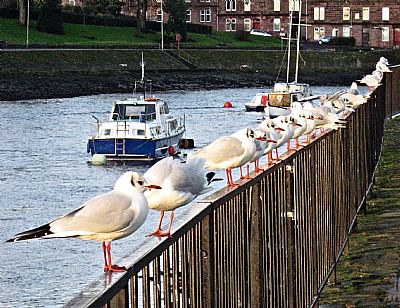
Black headed gulls line up on the railing above the Leven at Dumbarton. Being winter, they have lost their black hoods except for spots behind the eyes, but can be identified through their red bills and legs.
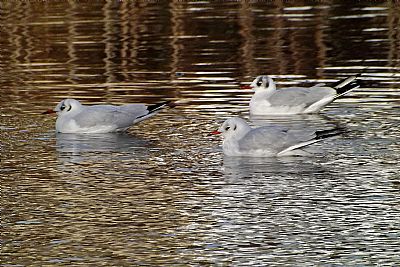
Black-headed gulls on the canal at Old Kilpatrick in January.
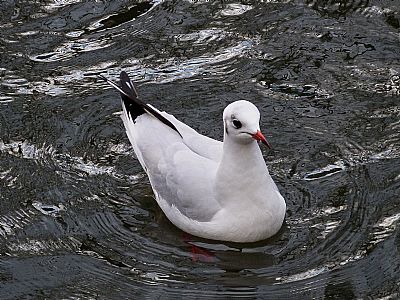
January on a Glasgow park pond.
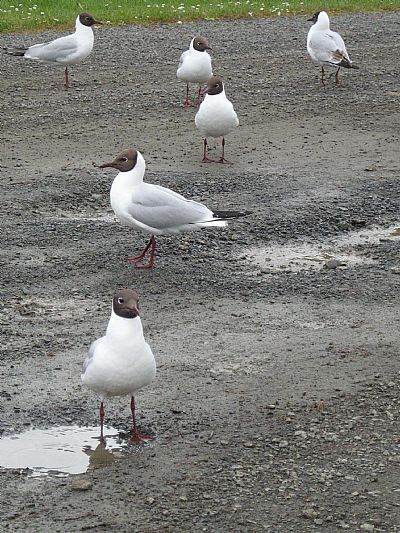
It is summer and these gulls have their hoods on. Not quite black, but a dark brown.
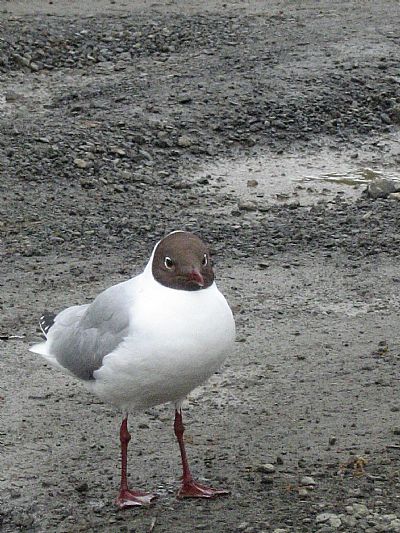
This one looks almost a caricature of a gull, its head drawn in and its chest out, beady eyes wondering what that camera is doing pointing at it, but also looking for a potential hand-out. (Photos taken near Kilsyth).
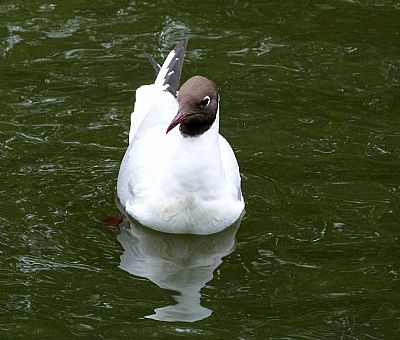
The cycle of the seasons. It is June again and this one looks replendent in its smart outfit after months being hood-less.
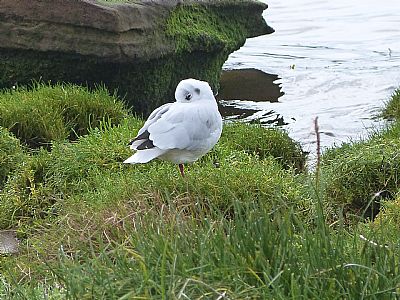
It is September. Summer is over, autumn not really quite started. This gull is probably this years brood and has not achieved a full black head so looks even whiter than adults in winter plumage. Havoc. Time for a snooze.

